Grumman Martlet III, Consolidated PBY-5A Catalina Mk III & MiG-15
November
2009
Grumman
Martlet III, Consolidated PBY-5A Catalina Mk III & MiG-15![]()
![]() This
Month's significant WW2 Anniversaries:
This
Month's significant WW2 Anniversaries:
4 Nov 1939 - U.S.
Neutrality Act (1939) is passed.
US Citizens
still cannot assist named "Belligerants", but US companies
may supply arms on a strictly cash basis.
- 400,000
Polish Jews are relocated to the Warsaw Ghetto.
17 Nov 1939 - IRA
begins bombing campaign in London
30 Nov 1939 - USSR
attacks Finland, in what would become known as the Winter War.
Grumman Martlet Mk III, 805 Sqn FAA, Western Desert, 1941.
Hasegawa 1/72, built straight from the box.
Since there is only one more Wildcat/Martlet in the stash, now seems a good time to build it and (almost) complete the set (I still need an ex-French Mk I). The Hasegawa Wildcat kit is pretty much "state of the art", with finely engraved detail and unlike all of the others I have built, this one actually has a cockpit tub and instrument panel! However, I have to report that it also cost more than twice the price of any of the others (and more than 3 times what I paid for the Frog kit) and as far as I can tell, it is not currently available.
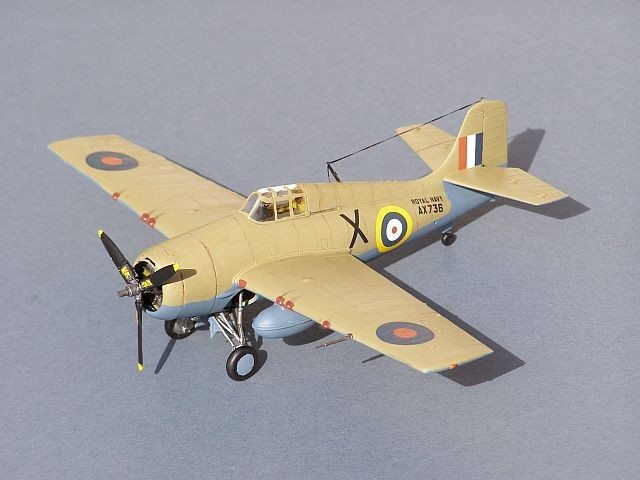
This particular issue is the standard F4F-3 kit, but with new transfers and instructions on how to fill the wing folds and cowling flaps to convert it into a Mk III, from the ex-Greek order that was absorbed by the UK in 1941. Hasegawa have a reputation for re-issuing kits with new transfers and hiked prices and I guess that this is one - I wouldn't mind but the new decals really aren't that wonderful - its a fairly small sheet, they are quite thick and the white has a green/ivory tinge to it.
Given the delicate detail, I can also see that the filling will require some special care.
Three decal options are provided, all from 805 Sqn in the Western Desert; two stone and azure blue variants (MkIII) and an overall grey version. The first stone coloured option is an interesting one - I have seen pictures and profiles of this aircraft suggesting a stone and dark earth camouflage, however it is a subject of much contention and Hasegawa have clearly gone for the more easily verified option of plain stone topsides. Interior colours are an issue as well; Hasegawa recommend primer yellow, but I have also seen suggestions that all Grumman aircraft were light green inside? Since you can't actually see a great deal, I have decided to trust Hasegawa and go with primer mixed using yellow and grey.
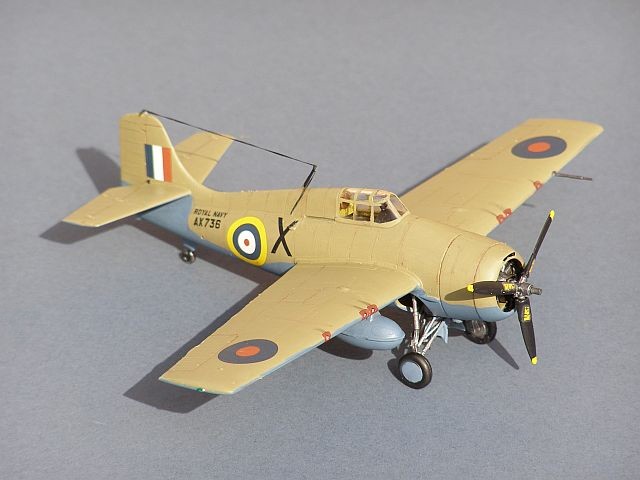
After 2 days of assembly, I have to say that this is unquestionably one of the very best engineered kits I have ever built, and definitely merits the description "shake and make". The standard of moulding is impeccable, the parts fit perfectly and the attention to detail is superb. There are even tiny keys to ensure that you can only fit parts like the cowling ring in the correct orientation. As a Wildcat/Martlet kit, it is light years ahead of any of my others and just as much fun to build. Does it merit its high price? Well, after due consideration, I think that it may just do, although when assembled it looks very similar to the Hobby Boss kit.
Moving on to the painting (normally my favourite part of any build), the colour scheme I intend to do is pretty simple on the face of it. Stone upper surfaces and azure blue undersides. But what exactly is 'Azure Blue' and at that point in the war should it actually be sky, or even grey instead? In any event my carefully hoarded tin of Humbrol Azure blue turned out to actually be RAF grey-blue (not sure how I managed that), which was a disappointment, but I located an old tin of Mediterranean blue instead and tried to mix up an alternative. Unfortunately when it dried this was far too bright, so I bit the bullet and trogged into town to obtain the correct Humbrol paint, then tried again. Well, the tone is certainly better, but it really is far too dark. As a third coat of paint would have finally obliterated any remaining detail, I have left it at that.

Decals went on reasonably well, except the X, which silvered slightly on one side and found it difficult to settle on a protrusion on the other side. A little Decalfix sorted the protrusion, but I will have to live with the silvering.
All in all, an excellent little kit. Expensive, but probably worth it. My build was slightly spoilt for me by the issues with the azure blue paint and decals, but the end result looks OK and adds yet another Wildcat/Martlet to the collection!
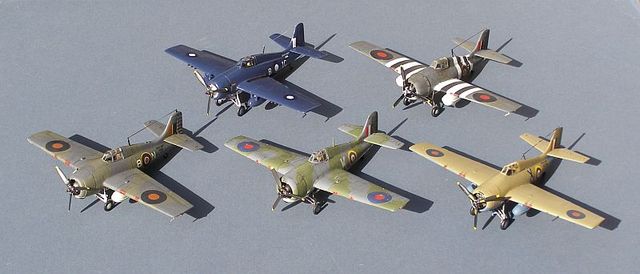
More Martlets and Wildcats on the RN Props pages
Consolidated PBY-5A Catalina Mk IIIA 131 OTU, RAF Coastal Command 1943-44.
Airfix 1/72 , built straight from the box.
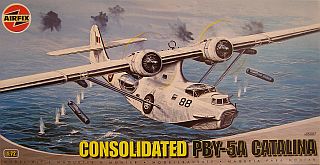
This is one of those "reliving your childhood builds" - I always wanted an Airfix Catalina, but never had one, so I'm making up for lost time by building the current Airfix release. In fact this one came for free, after I cashed in a few of the Airfix Club "flying hours" tokens from the stash.
This is another recent Indian produced Airfix issue, which means soft and well moulded plastic, although this one seems to have a bit more flash than the others. It also has, believe it or not, useable, in-register transfers/decals for once; looks like Hornby are responding to the criticism of their early releases! I guess that Airfix chose the PBY-5A to appeal to a wide international audience; but even though one of the options is the RAF Coastal Command aircraft shown on the box-top, the Catalina Mk IIIA was actually one of the least numerous marks in service - the RAF possessed a total of only 12 or the amphibian variant of the Catalina. The alternative option is a "Black Cat" US Navy PBY-5A from the Solomon Islands.
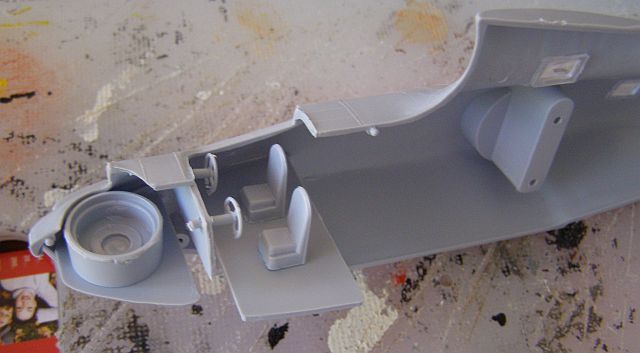
There is minimal interior detail, which is a shame because you can see a lot of the interior through the main cockpit windows and also through the side gun/observation blisters, so a little basic scratch detailing will work wonders here. There are also numerous working features (e.g. turret, floats ailerons & elevators) which detract somewhat from accuracy, but are actually quite good fun.
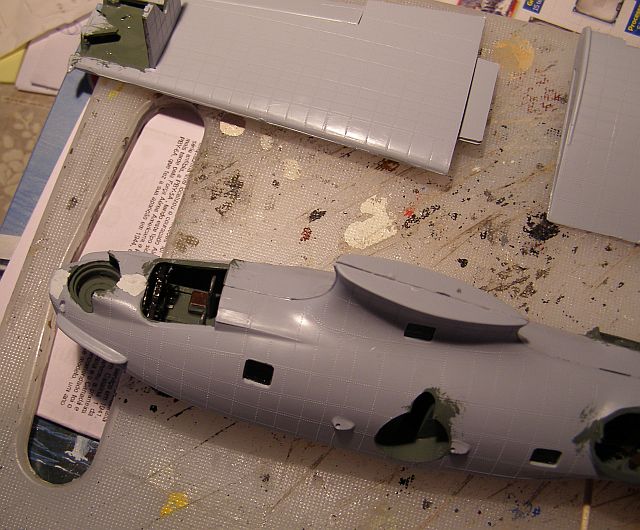
Fit was generally OK, although I had some difficulty with the centre wing section, which didn't fit well to start with and was also slightly warped (those Tesco £1 spring clamps have proved their worth once more!); if this were a Russian ex-Frog kit, I would suspect that the moulds had become corroded. The elevator halves were a poor fit, with very thick trailing edges. One area of real disappointment is the large forward undercarriage bay , which is completely open, leaving the cabin floor and hollow fuselage in full view. The cabin windows are also a rather poor fit and do not fit flush with the fuselage; in common with all the clear parts, there is no framing detail, which makes painting a bit of an adventure, especially on the blisters.
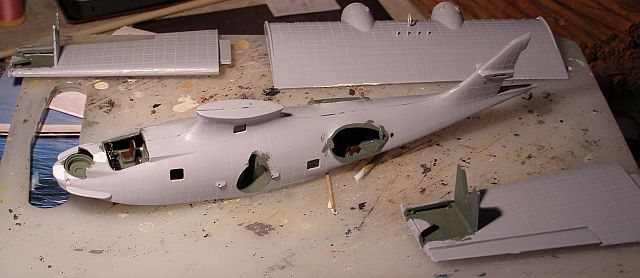
Attaching the fuselage halves revealed some fit and alignment issues, but these were largely overcome by using the spring clamps, with the remaining gaps and ledges filled with Tippex. The wings come in 3 parts - an inner section holding the engines and two outer sections including the folding floats. These all fitted together without problem, but attaching the wing to the fuselage and placing the struts in position was a fiddly job, which ideally would have required a third, and perhaps fourth pair of hands. I also left painting the struts until after they had been attached, which was a mistake, as access is not easy once they are in place.
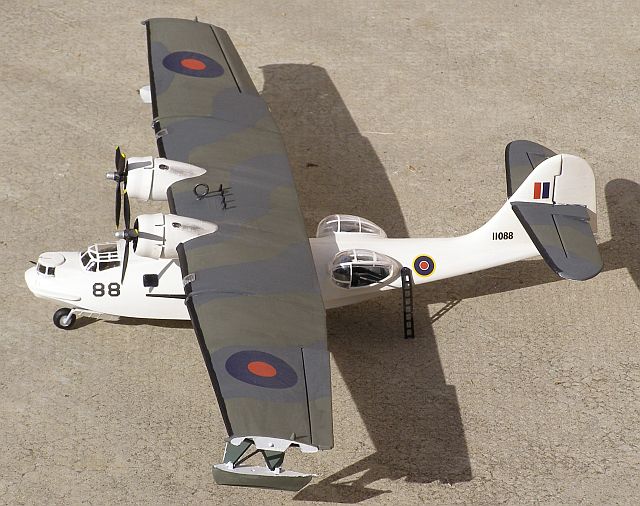
The Airfix painting instructions are rather vague, with only a large indistinct drawing of the aircraft. The box cover reveals a lot of potential for further detail painting, but also seems to be a different paint scheme, as it has white upper wing surfaces rather than the camouflage suggested by the instructions. The RAF's Catalina Mk IIIs were mainly employed on transatlantic ferry duties (delivering crews to collect new Catalinas!), and Airfix provide markings that the box (but not the instruction sheet) tells you are from 131 OTU in Northern Ireland. In both cases, I am not convinced that live depth charges would have been appropriate (or even if these are British weapons), but I have fitted them anyway!
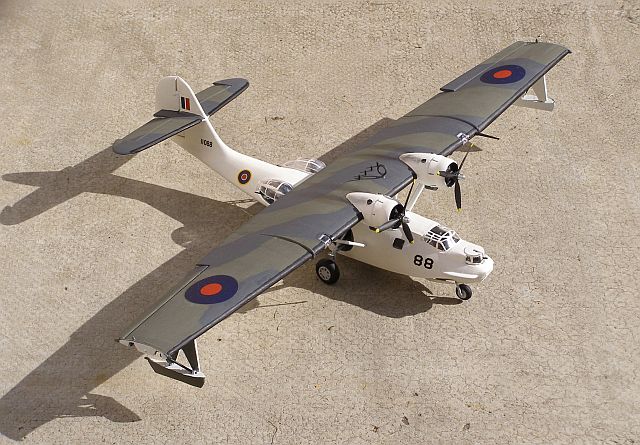
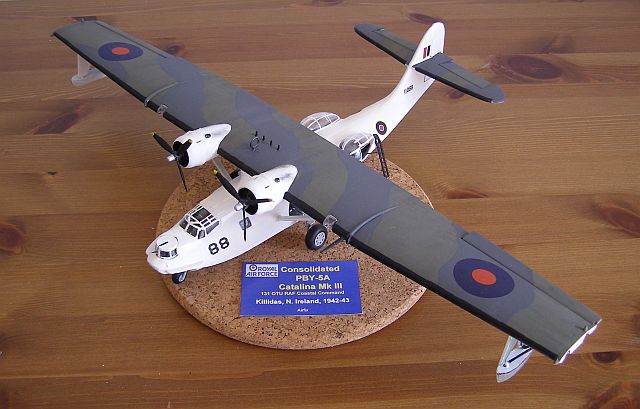
In summary, this was not the easiest or best engineered kit I have built. Parts fit is OK, but not much more than that. Transparent parts are a disappointment, with poor fit and no framing detail. However, as a 're-living your childhood' build it was perfect, it looks good on the shelf (actually it doesn't fit on the shelf) and it is, without a doubt, the largest kit I have built in the last 30 years (I built plenty before that), which has allowed me to revisit a few lost tricks and techniques for larger models, that may come in handy as I work my way through some of the other "biggies" in the stash!
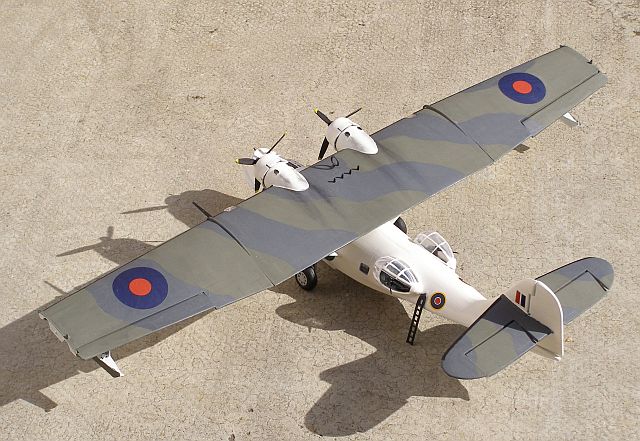
More of the Catalina and other RAF Aircraft on the Friends & Allies pages
Mikoyan-Gurevich MiG-15, Korean People's Air Force, 1952.
KP 1/72 , built straight from the box.
I have always wanted a MiG-15 to accompany my Sea Fury models. During the Korean War, Royal Navy Lts Carmichael & Davis, plus Sub Lts Haines & Ellis, flying four Hawker Sea Furies, were credited with shooting down a North Korean MiG-15, the first time that a jet fighter had been bested by a piston engined fighter (a short time later another MiG was also destroyed by a USMC Corsair, but the Corsair was itself downed by the MiG's wingman). The Sea Fury had scored a stunning victory, demonstrating that well practiced fighter tactics could overcome a significant performance advantage.
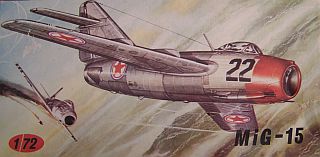
Back in the 1970s, Czech company KP (Kovozavody Prostejov), whose primary business was (and is still) moulding plastic kitchen utensils, established a reputation as the best source of accurate models of eastern block aircraft. Their kits drew upon their considerable plastic moulding expertise, and whilst certainly not in the same league as Hasegawa or Tamiya, they were usually more accurate than their Western European rivals, if rather less well engineered in buildability terms. KP, or Kopro as they now like to be known, still produce kits, many of which match the best standards of the 21st Century, although (rather like Revell) their catalogue also includes a number of their older, less refined moulds.
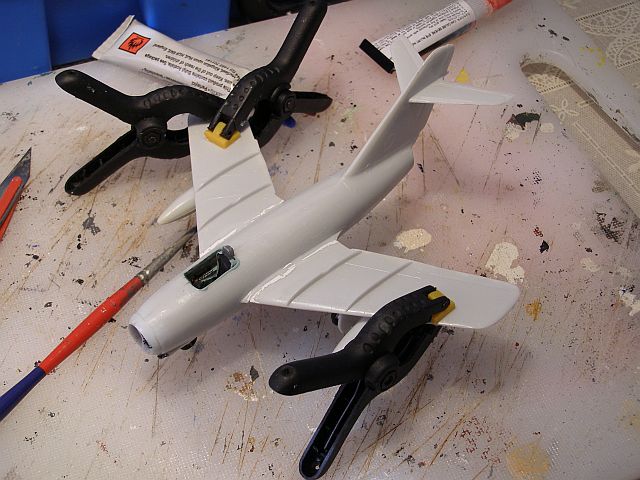
For many years, the KP MiG-15 was considered the best 1/72 kit of this iconic aircraft. Since then, it has been eclipsed by modern products from Italeri/Bilek and Academy, but it is still worth consideration. I purchased this one as part of an unwanted collection of old kits on sale at my local model shop, but they regularly appear on e-Bay, and with the iminent release of the new Airifx mould, I suspect that even more will surface from modeller's hidden stashes. The kit itself is well moulded, in thin and slightly brittle grey plastic, with fine and slightly indistinct raised detailing. The parts fit is actually quite good, although there are no locating pins and rather more flash than desirable. The level of detail attempted is commendable, but probably exceeded the moulding technology. Nevertheless, it comes with a reasonable cockpit (tub, seat, side panels, control column and instrument panel) all with raised and acceptable detail. The method of locating the cockpit tub is rather vague and I added a little Tippex filler to the wing roots. The nose, forward of the cockpit was also filled with lead shot to try and avoid tail-sitting.
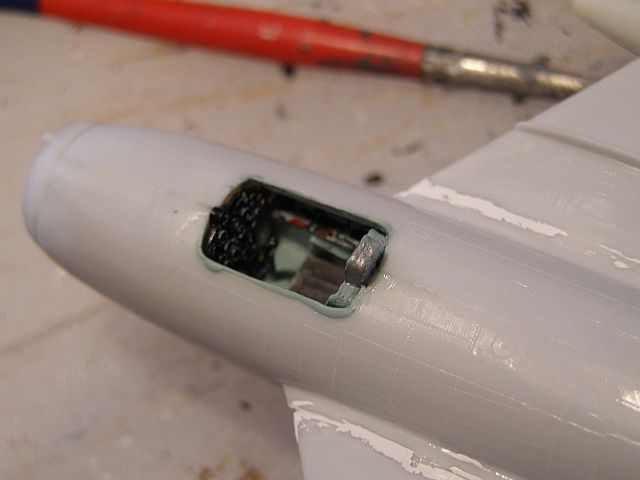
One interesting detail arises from the apparent mismatch in the size of the kit's wing and rudder halves, leaving a small lip; I have seen several modelling reviews that quote this as a fault, but according to my copy of Putnam's MiG Aircraft since 1937, these are small metal trim tabs, known as nozh (blades), which were rivetted to the trailing edges and manually adjusted using pliers, in order to overcome the MiG-15's tendency to unstability at high speed.
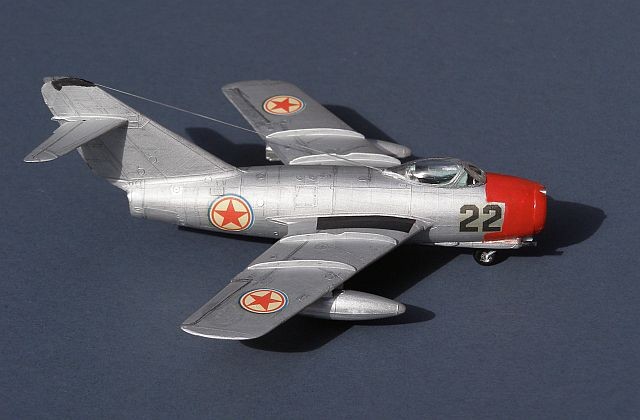
Good looking transfers are included for 2 Czech aircraft (one from the national display team and one from an operational squadron), plus a red nosed North Korean aircraft. The operational Czech aircraft includes a decal for the heraldic badge of Moravia, which is prominently placed on each side of the aircraft's nose, but the decal is simply a white shield with rather optimistic instructions for the modeller to paint the complex heraldic shield by hand.
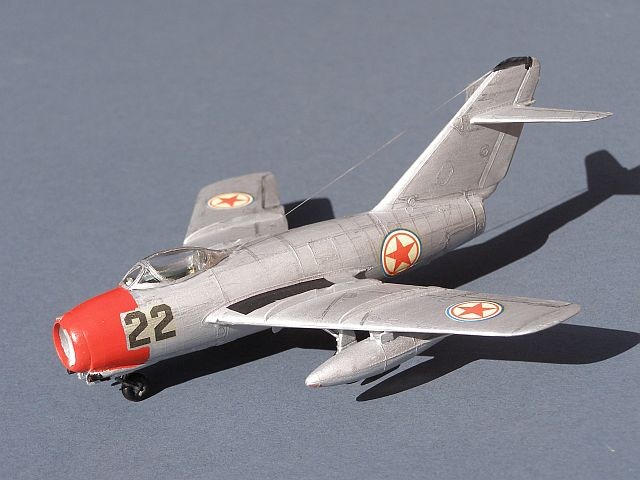
My kit probably dates from the 1980s or even late 1970s, but the transfers remained entirely useable, if very slightly yellowed.
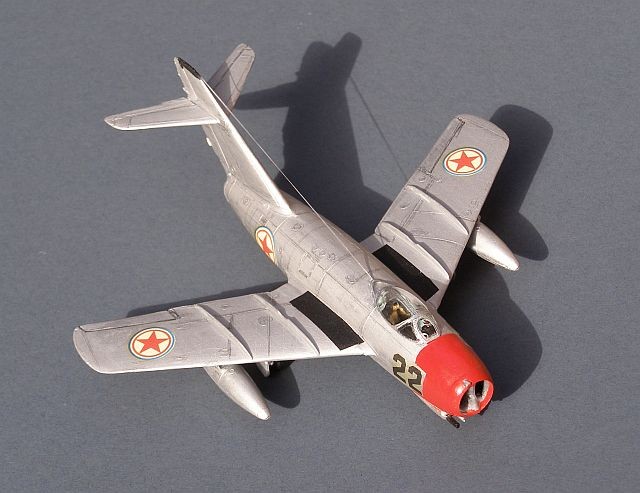
More MiGs and others on the Adversaries pages
www.gengriz.co.uk